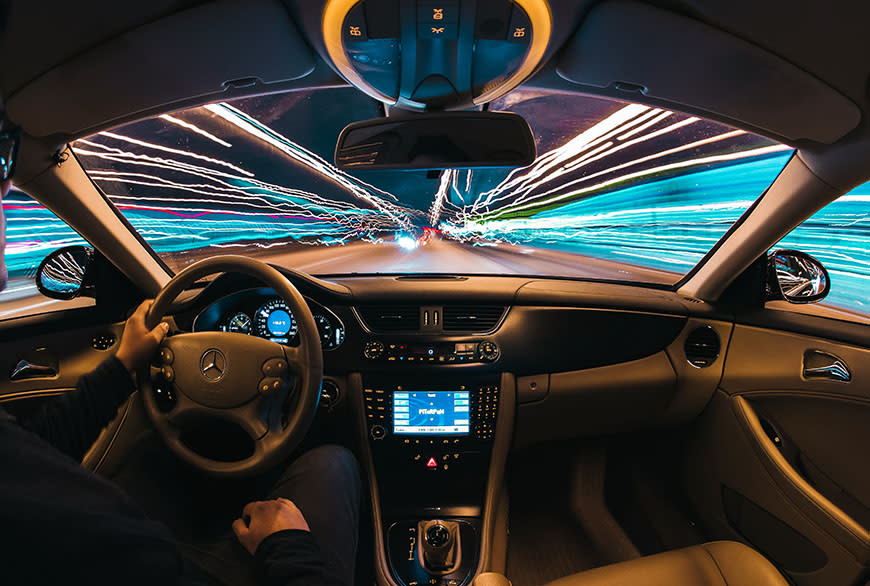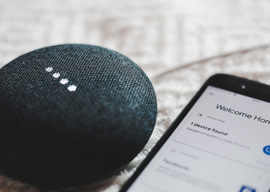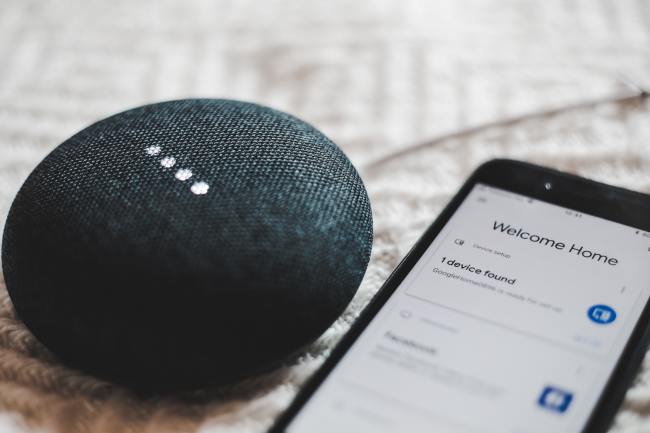
You’re notified that your flight is on schedule and that your Uber is waiting outside. The lights in your condo flick off, and the temperature sinks to 62˚. The Uber idles at the curb and considers the driving time by pinging traffic sensors. Based on your Google flight data, it knows you must arrive at 4:25 p.m. to leave a two-hour buffer for your international flight. All of this without having to issue a single command. Everything is seamlessly connected. Processes and automation happen without intervention, based on your needs, connected devices, and available data streams. We’ve finally reached the future.
We don’t want to ride in the passenger seat of our own lives. Where’s the sense of accomplishment in that?
Problem is, it’s one that makes many people uncomfortable.
We don’t want to ride in the passenger seat of our own lives. Where’s the sense of accomplishment in that? For the above scenario to exist, we must give for-profit companies with possibly dubious motives the ultimate access to our data. We’d need to let them know everything, from our personal finances to the vacation we’re thinking about booking, and they won’t hesitate to use it to generate shareholder value. This future also assumes the unlikely scenario that we’ll know how to set-up, maintain, and interact with all this cutting-edge technology. Let’s unpack what’s wrong with this scene and think about how we can design better IoT experiences.
Four Current Challenges
Humans like to control events and outcomes, even if it’s to their own detriment. How many times have we seen the route that Googles Maps plotted for us and decided that we know a better way, only to get locked in a 20-minute traffic jam. Google wised up to this behavior and started providing alternate routes, with time calculations at points where the route could diverge. Machine learning hasn’t yet become so sophisticated that we’re comfortable ceding control to the AI overlords. We want to remain in the driver’s seat.
Scattered ecosystems with devices that don’t always play nice. Today’s technologies, hardware, software, and communication protocols are still developing. Developing? They’re brawling. They’re fighting to occupy the center of our digital lives. Big companies are building walled gardens in the personal device and smart home spaces, while others are battling for an open-source future. We’ve seen the democratization of tools that allow us to link and automate some functions across IoT devices and systems, but it still requires a basic level of “programming” ranging from Alexa routines to building applets in IFTTT. Most users are only willing to engage at the most basic level and the effort to program these complex systems doesn’t always payoff.
People trust companies less with their data and privacy than ever before. We’ve learned just how cavalier companies can be with our data and personal information. As customers we’ve begun building our own personal firewalls and don’t necessarily like to “link” all of our data streams and connected devices. Facebook helps people connect and share photos, updates, and stories with great ease. However, people might be hesitant to share their home with a Facebook IoT device (portal) that can follow them around, capture audio and video. Especially after learning about all the data breaches in the past year (lots of private data going to Cambridge Analytica, selling information to advertisers). Every connection point and data source that is made available comes with increased security risk and complexity. The more nodes in the system, the greater opportunity for failure in the system. Users are looking to simplify their personal privacy policy, and limit exposure as much as they can.
Mixed modes of interaction and a cacophony of voices. We’re racing toward a super-connected future, but users are struggling to keep track of how to operate and maintain our current stable of devices and technologies. We have a dizzying number of ways to interact with these devices, from wake-up words to gesture control and touches. It adds up to an overwhelming and disconnected experience, one that users spend more time relearning than actually engaging.
Four Potential Solutions
Automate with intent and leverage AI/ML—with transparency. As we design products and experiences, we should ask: “What problems are our customers trying to solve?” We should weigh the risk of failure in automation with the benefit of the effortless outcome. We need to design interactions that present information coming from these devices in practical ways. Don’t try to make all the decisions for users. Give them the right information, along with contextual choices that make interactions feel effortless. Users like to feel in control, even if it’s just the perception of control. By removing the human interaction, we strip away some of the ownership and satisfaction of the task completed and give less reason to come back again and again. When leveraging customer data, use it for their benefit. Show them value and they’ll give you permission to derive some as well. For instance, by sharing location and cuisine preferences, a GPS-enabled watch sometimes points a user toward a restaurant they’d love. Users are willing to give permission to use that data because they understand why it’s being collected and can see a positive, tangible outcome.
Build for a broad ecosystem and consider the real user needs. IoT devices that have really gained traction in the market aren’t the ones that have the most impressive technology. They’re the ones that fit snugly into our lives and truly add value. They work with the routines that we’ve already developed and the systems and technologies we’re already using. When we can solve a user pain point or need really well with a solution that doesn’t create another one downstream, we’re successful. We need to understand people and the context of their lives to build technologies that work for them. With this understanding we can identify gaps and opportunity areas to design solutions that meet, not just functional, but emotional needs as well.
Create connections with personalized control. Can we design experiences that don’t need to collect all the data, all the time? Companies are amassing a tremendous amount of data about each of their customers. Oftentimes, they don’t know how or what they’ll use it for. Think of how we add more nuance to these connections. Apple has added controls for when data like location is shared (always shared, shared only when app is open, or never shared). This is a step in the right direction but still not customer-focused enough. We can do better. We need to give users a better toolset to personalize the experience and that level of data they’re willing to trade for the experience.
Consider the medium. With the rise of voice-enabled devices, the impulse might be to make everything voice controlled. Not all interactions are best served with voice-only interactions. Google has recognized this with their Google Home Hub. They understand that some information will always be better represented visually, even if control is done through voice. With so many types of interactions and outputs at a designer’s disposal, it is important to consider what will result in the most seamless experience for the user.
The Alternate Future
It’s Game Four of the World Series, and you’ve invited some friends over. A notification sounds—ding!—and a video feed showing your pal, Dave, displays on the screen built into your refrigerator. He’s automatically buzzed in because you’ve set your home security permissions on the event page you shared with everyone. You yell down the hall: “I’m in the kitchen making drinks!” Others arrive, including Jeff, who didn’t respond—who never responds to social invites. You unlock the door with a quick swipe on your watch.
Can we design experiences that don’t need to collect all the data, all the time?
The crowd’s getting hungry, and so your home AI becomes a waiter. A message jumps to the phones in the room asking to access their food preferences. With this information, the system serves up a variety of local options and everyone chooses something that suits them. Each person pays for their food using their preferred cash transfer app—simple. Your connected system is built on open-source principles to allow for the greatest adaptability to different types of users. Everyone can track the delivery location in real time. Julie runs down to meet the driver, just as he pulls up.
After dinner, you glance at your data-sharing hub and see that your food preferences are still being shared with Yelp to get recommendations for later. At a glance you see where your information’s going and how it’s being used. You wave your hand over a sensor next to the couch and enable “local mode.” Now the data-sharing and information collection is limited to devices on your network only. The trade-off is clear: you’ll get fewer recommendations and choices based on behavior, but also complete control of your data. Some of the devices in your network won’t perform to their full potential, but that’s worth it, if you can keep your information private for a period.
Game Four concludes. Red Sox win! Everyone celebrates! Your home AI sends virtual fireworks to each Sox fan in the room.
Not long after, as friends file out the door, you turn device connectivity to “full connection,” and receive notifications about tomorrow’s schedule and some recent headlines. Your entertainment center powers down and the living room lights shut off as you brush your teeth and head to bed. It’s been a great night and coordinating and hosting doesn’t seem to cause you the stress that it used to. Everything works perfectly. The future is here, and you’re in control.
Photo by Samuele Errico Piccarini on Unsplash







